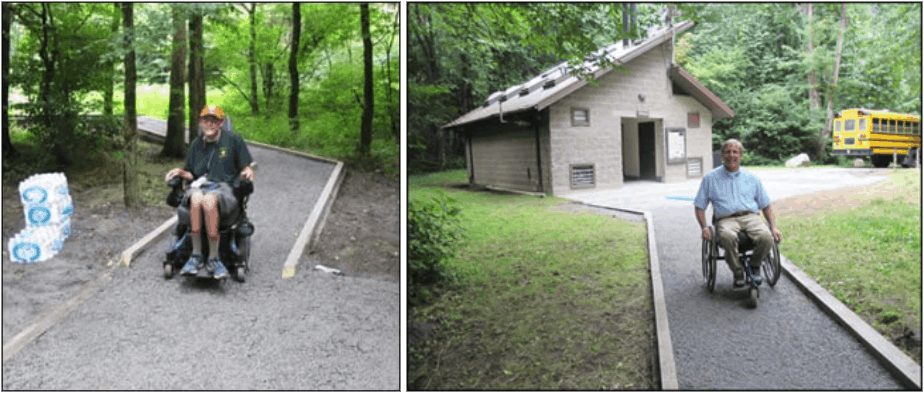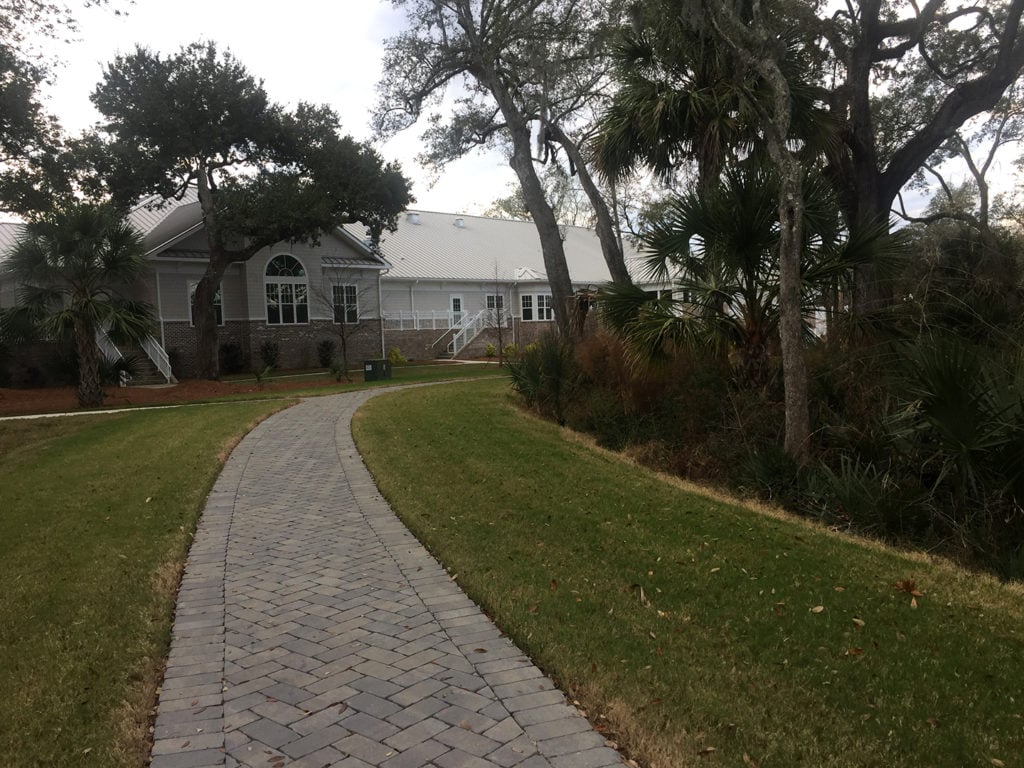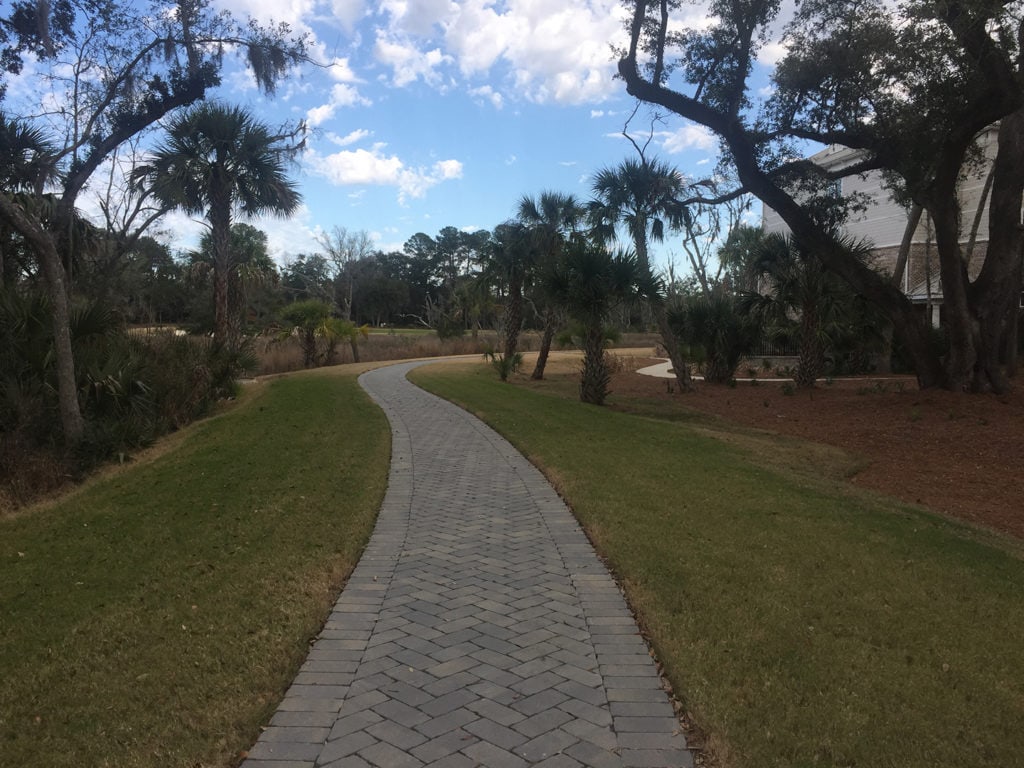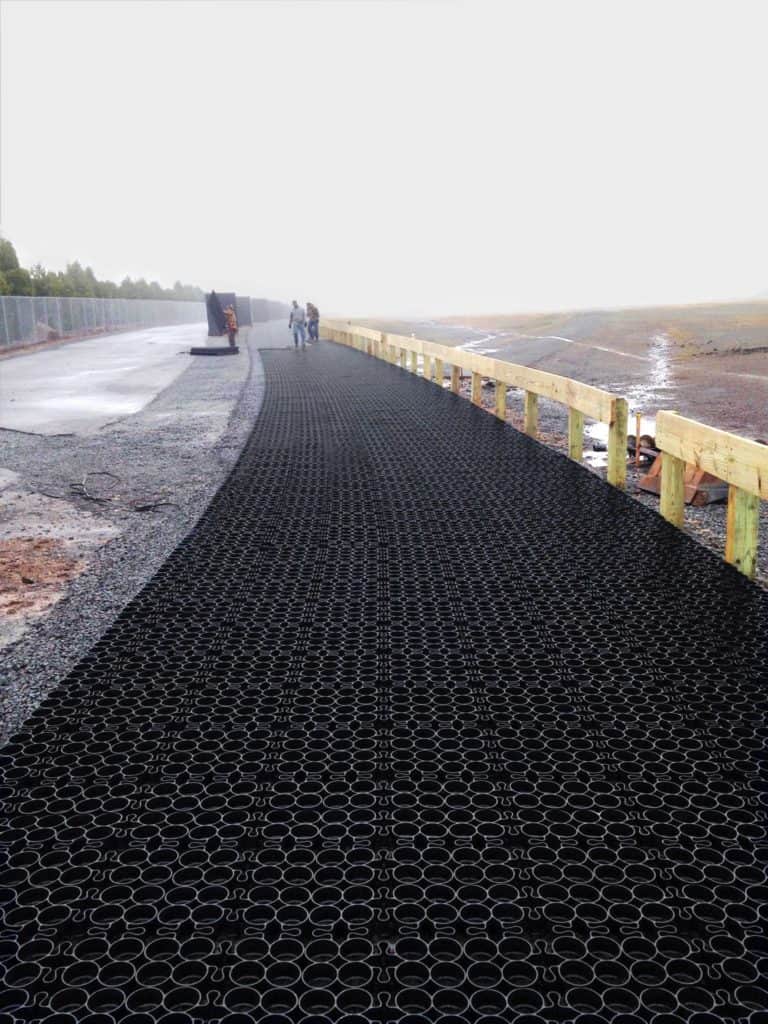Up until this point in history, most walkways and paved surfaces, in general, have been laid with impervious material. Impervious material does not allow stormwater or anything to pass through it because there is not enough space within the makeup of the material itself. Concrete, asphalt, brick, and stone are all examples of material that is impervious (impermeable).
These materials can be laid in a pattern that features cracks and gaps between each individual brick or piece of paving for water to pass through, but this is still an imperfect method of achieving permeability. These pervious or permeable areas are small and clog quickly, rendering the surface essentially impermeable.
In recent years, permeable paving has been invented that features the same, if not a higher level of functionality, strength, durability, and versatility while being completely permeable at the same time. It’s not hard to see the benefits of this material over impermeable materials, but there are actually even more benefits than you might realize.
In case you want to learn about why permeable walkways, in particular, are superior to impermeable walkways, let’s take an in-depth look at why a permeable paver walkway is so much better than an impermeable one, shall we?
The Secret of Permeable Walkways Lies in the Design
Excluding pervious concrete, permeable walkways aren’t actually made with any kind of special material. The 100% permeable pavers we’ll discuss today are made from recycled plastic in an eco-friendly fashion. This recycled plastic is designed to be incredibly durable and tough, in the case of products like TRUEGRID Permeable Pavers.
The way they work is incredibly simple and easy to understand. First, the intended paving area is excavated just deep enough to allow for the placement of the pavers. The exposed subgrade is then covered with a geofabric to create separation between the detention base and the soil. Then, a clean angular aggregate such as gravel will be laid in over the fabric and compacted multiple times with a heavy vehicle. Once all the gravel is laid, a final compaction will be done and the surface will be leveled.
Next, the interlocking pavers will be laid over the leveled aggregate, and connected together along the pathway like puzzle pieces. The paver squares can be sawed and trimmed to fit perfectly within the paving area. After the pavers have been laid along the walkway, more aggregate will be laid over the top and compacted again so that it locks into the pavers.
Why are Permeable Pavers Better than Concrete or Asphalt?
There are many reasons why permeable pavers are superior to other common paving materials, including but not restricted, to walkways. For one, the entire process of sourcing the material to create the pavers, to installing them, is much more environmentally-friendly than it is to lay impervious pavement. The machines, equipment, time, effort, and amount of resources used are vastly more eco-friendly.
The installation process is much faster as well and costs far less than it would to install concrete or asphalt. Building permeable pathways with TRUEGRID pavers will not only save you money in the short-term, but in the long-term as well, thanks to the drastically lower maintenance costs and higher level of durability.
Concrete, brick, asphalt, and other types of impermeable material are easily warped, cracked, chipped, eroded, and damaged over time, but the recycled plastic pavers from TRUEGRID are far more durable and won’t suffer from this type of damage. When filled with natural elements such as gravel or grass, they offer a more pleasing, natural aesthetic while eliminating puddles and standing water. For gravel pathways, they provide a solution to erosion issues.
Permeable Pathways are Better for the Local Environment and People

Because a permeable paver walkway will allow water to pass through it, there are far less flooding and water-displacement concerns than with impermeable material. Permeable walkways allow water to pass right through them, directly into the soil below, just as it would through topsoil and grass.
For handicapped individuals, permeable walkways are a far better choice as well. For example, the ADA compliant trails in this National Park were built by Boy Scouts with permeable pavers which allow disabled individuals access to areas of the park that they previously could not access. These trails make it far easier for wheelchair-bound individuals to navigate without fear of running over dips, dents, cracks, and otherwise dangerous features of a well-worn impermeable pathway. The pavers eliminate erosion or washout of gravel paths, and the associated constant maintenance that goes with it.

This hidden firelane that seamlessly blends in with surrounding grass was created in South Carolina using TRUEGRID’s PRO PLUS pavers.

The Pocono Raceway replaced their own eroded walkways and parking lots with TRUEGRID pavers to help them comply with NASCAR’s new green initiative. 20,000 square feet of pathway was installed with #57 stone as the base rock and a TRA fill.


TRUEGRID Products are Incredibly Versatile
With three different types of pavers ranging from light, residential pavers to heavy industrial pavers, the ways in which a permeable paver walkway can be utilized is nearly endless. From firelanes to parking lots, walkways, driveways, and more, permeable pavers from TRUEGRID are proving time and time again that they can not only compete with traditional paving materials, but that they outperform them in every single category.
From user-friendliness to versatility, durability, ease of installation, cost-effectiveness, eco-friendliness, and more, the list of reasons to build a permeable walkway with their products is extensive.
Consider Using Permeable Pavers for Your Next Landscaping Project
If you’re building a walkway, you should seriously consider creating a permeable pathway instead of an impermeable one. Not only is it better for the local environment and the global environment at large, it will cost you less and be much less of a hassle to install. With TRUEGRID permeable pavers proving superior to concrete, asphalt and other impermeable materials commonly used for creating pathways, it’s hard to see why you would want to use any other type of paving material.
Take it from the many different business owners and individuals who have created permeable pathways of their own with TRUEGRID pavers, the cost-to-benefit ratio is enormous and you can avoid many of the problems that other materials often pose, while saving yourself money and making life easier for you and those who’ll be using your pathways as well.



